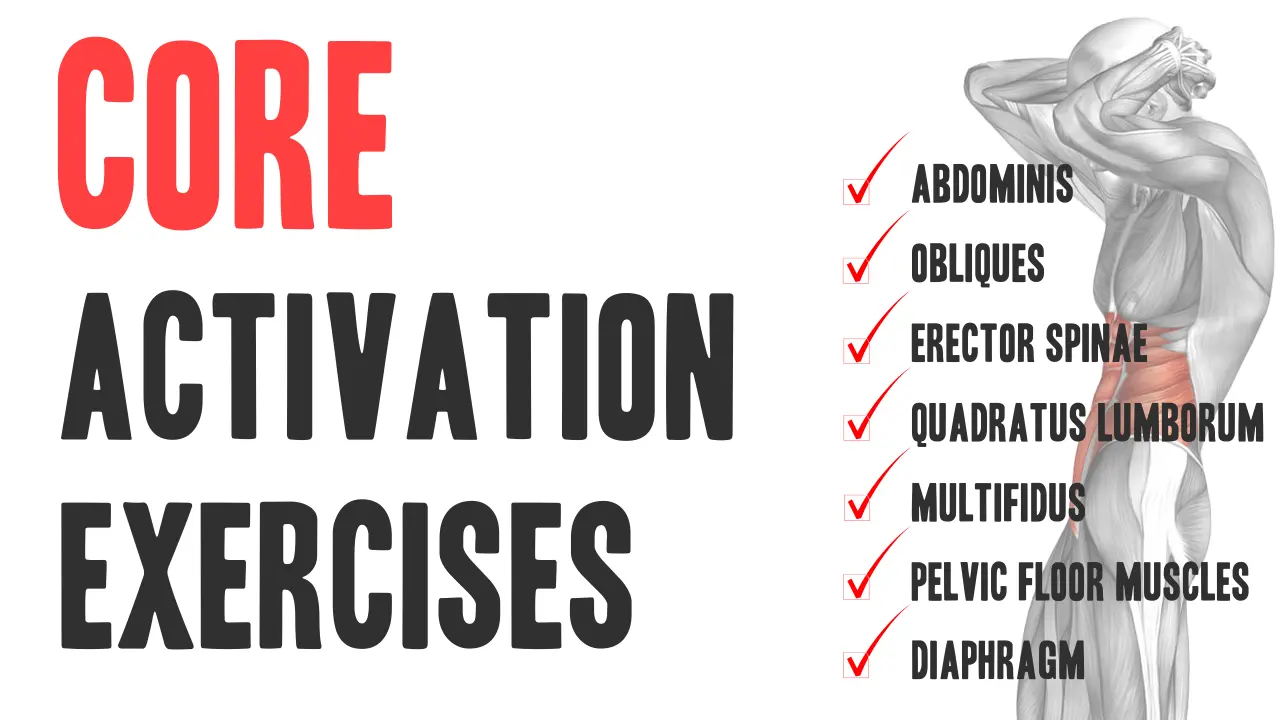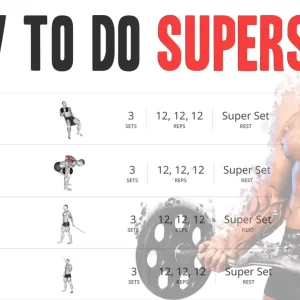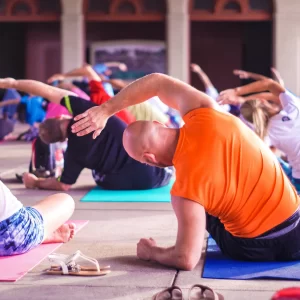Contents
Embarking on a journey to a stronger and healthier body requires a solid foundation, and that foundation starts with core activation.
The first stage of your core training should involve learning how to engage your key core muscles and achieve a neutral pelvic position. Activation is a fundamental part of core workout, helping to strengthen your core and prevent injuries.
The “deep” core muscles responsible for stabilization are not as easy to feel as “surface” muscles, and engaging them therefore requires time, focus, and control. Concentrate on your breathing and technique to ensure that you are performing the movements correctly.
At first you should work on the core muscles in isolation, then start to incorporate it into more challenging core exercises. At this stage, you should keep your workout simple—do not be tempted to push yourself too far, too quickly.
Here’s a list of top 7 simple core activation exercises that you can incorporate into your routine:
1- Abdominal Bracing
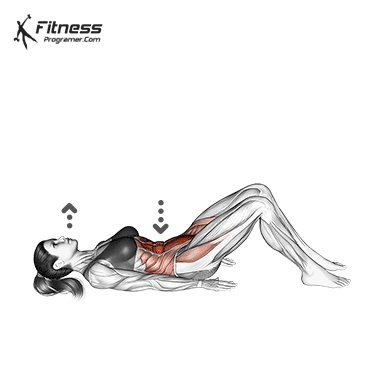
Abdominal bracing is one of the most effective techniques for promoting activation in the abdominal muscles. The primary goal of abdominal bracing is to create tension and support in the core, providing stability and protection for the spine during various physical activities. (1)
It’s worth noting that abdominal bracing is not the same as sucking in your stomach. The goal is to create a firm and supportive contraction without compromising your ability to breathe.
Target Core Muscles:
- Rectus Abdominis
- Transverse Abdominis
- External Oblique
- Internal Obliqu
- Pelvic floor
- Multifidus
- Erector Spinae
How to Perform Abdominal Bracing:
Correctly executing abdominal bracing involves a focused effort to engage specific muscles. Follow these steps for precision:
- Begin by pulling your navel back toward your spine, emphasizing the recruitment of the Transverse Abdominis.
- Take a deep breath through your nose, expand your diaphragm, allow your ribcage to fully expand.
- Upon exhaling, simultaneously tighten your belly muscles while drawing your belly button inward towards your spine.
- Envision a gentle pull, as if a string is attached to the inside of your belly button, guiding it back towards your spine. Ensure this movement does not interfere with your breathing.
- Maintain the braced position for 10 seconds, focusing on the engagement of the targeted core muscles.
- Gradually release the tension and relax.
By incorporating abdominal bracing into your core exercise routine, you enhance stability and fortify these crucial core muscles. Remember, the key is to achieve precision in movement without compromising your breath. Practice this technique regularly to experience the full benefits of strengthened core muscles and improved overall stability.
2- 4-point Tummy Vacuum

The 4-point tummy vacuum is a straightforward exercise that can be effective in addressing breathing difficulties while also addressing concerns related to the abdominal wall.
By regularly incorporating this exercise into your routine, you may experience improvements in core strength and stability. Strengthening the transversus abdominis contributes not only to better posture but also helps in providing support to the spine, potentially reducing the incidence of lower back pain and minimizing the risk of injuries.
Moreover, the focus on controlled breathing during the exercise enhances diaphragmatic engagement, leading to improved respiratory function.
Target Core Muscles:
- Transverse Abdominis
- Diaphragm
- Pelvic Floor
- Multifidus
To execute the 4-point tummy vacuum:
- Position Yourself: Begin on your hands and knees, ensuring your wrists are aligned with your shoulders and your knees are beneath your hips. Maintain a neutral spine position.
- Engage Your Core: Inhale deeply, expanding your diaphragm. As you exhale, draw your belly button in towards your spine, activating the transversus abdominis. Imagine pulling your abdominal muscles up and towards your back.
- Hold the Contraction: Maintain the contraction of your abdominal muscles for 5-10 seconds, keeping your breathing steady. Focus on pulling your navel as close to your spine as possible.
- Release and Repeat: Relax your abdominal muscles as you inhale, then repeat the process for 8-10 repetitions. Gradually increase the duration of the contraction as your strength improves.
Incorporating a 4-point tummy vacuum into your exercise routine can be a helpful starting strategy for relieving breathing difficulties and activating your core muscles.
3- Half Crunch
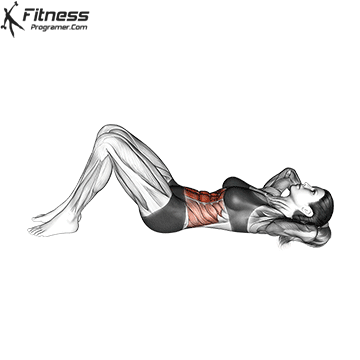
Embarking on a journey to a stronger core doesn’t always require complicated exercises.
The primary target of the Half Crunch is the rectus abdominis, commonly known as the “six-pack” muscles. As you lift your shoulders off the ground during the crunch, these muscles contract, creating the characteristic flexion of the spine.
While the primary focus is on the abdominal muscles, the hip flexors also play a supportive role during the Half Crunch. These muscles assist in lifting the legs and pelvis off the ground, contributing to the overall coordination and effectiveness of the exercise.
Target Core Muscles:
- Rectus abdominis
- Transverse abdominis
- Internal obliques
- Pelvic floor
Step-by-Step Guide to the Half Crunch:
- Lie on your back with your knees bent and feet flat on the floor, hip-width apart.
- Place your hands gently behind your head, avoiding pulling on your neck.
- Inhale deeply, drawing your navel towards your spine to engage your core.
- Ensure your lower back is pressed into the floor, maintaining a neutral spine position.
- Exhale as you lift your shoulders off the ground, focusing on the contraction of your abdominal muscles.
- Keep your gaze toward the ceiling to avoid straining your neck.
- Aim to lift your shoulders a few inches off the ground, ensuring a controlled movement.
- Inhale as you lower your shoulders back down, maintaining control throughout the descent.
- Allow your shoulder blades to lightly touch the ground before initiating the next repetition.
4- Heel Slide

Embarking on a journey to strengthen your core involves exploring effective exercises that target specific muscle groups. This simple and relatively gentle movement is a good exercise for improving strength and mobility in the muscles of your hip and pelvis. Always remember to perform the same number of reps for each leg.
Target Core Muscles:
- Hamstring
- Transverse abdominis
- Internal obliques
- Pelvic floor
- Multifidus
- Quadratus lumborum
Step-by-Step Guide to the Heel Slide:
- Lie on your back with your knees bent and feet flat on the floor, hip-width apart.
- Inhale deeply, drawing your navel toward your spine to activate your core muscles.
- Slowly pull one leg towards your stomach. Maintain contact between the heel and the floor throughout the movement.
- Imagine your core muscles working as you slide the heel, emphasizing the connection between your breath and muscle activation.
- Feel a gentle stretch in the hip flexors of the extended leg as you slide the heel away.
- Repeat the movement on the other leg, alternating between legs in a controlled manner.
5- Leg Pull-in Knee Up
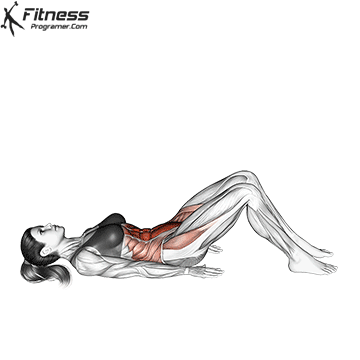
Once you have mastered the basic exercise, try this more demanding progression, in which you raise both legs at once. Focus on maintaining core stability and neutral alignment throughout the movement. Keep your core engaged and your knees bent at a consistent angle, and avoid dropping or overarching through your lower back.
Target Core Muscles:
- Transverse abdominis
- Internal obliques
- Pelvic floor
- Hip flexors
- Multifidus
How to do perform:
- Begin by lying flat on your back with your legs fully extended and your arms reaching overhead.
- Ensure your lower back is pressed into the floor, maintaining a neutral spine.
- Inhale deeply, activating your core by drawing your navel towards your spine.
- Exhale as you lift both legs off the ground, bringing your knees towards your chest.
- Pause when your knees are close to your chest, feeling the contraction in your abdominal muscles.
- Inhale as you extend your legs back to the starting position, keeping them a few inches off the ground.
- Maintain a neutral spine, ensuring your lower back remains pressed into the floor to protect against strain.
6- Dead Bug

This move is a functional core strengthening exercise that works the lower and upper body muscles.
The dead bug exercise involves coordinated movements of the arms and legs while maintaining a stable core. This helps improve neuromuscular coordination, which is important for various physical activities and sports.
Target Core Muscles:
- Rectus abdominis
- Transverse abdominis
- Internal obliques
- Pelvic floor
- Multifidus
- Quadratus lumborum
Step-by-Step Guide to the Dead Bug:
- Lie on your back with your arms extended straight up towards the ceiling.
- Lift your legs off the ground, bending your knees at a 90-degree angle.
- Inhale deeply, activating your core by drawing your navel towards your spine.
- Exhale as you simultaneously lower your right arm backward and your left leg forward, extending both towards the floor without touching.
- Keep the movements slow and controlled to emphasize muscle engagement.
- Pause when your arm and leg are hovering just above the floor.
- Feel the tension in your core, ensuring your lower back remains pressed into the floor.
- Inhale as you bring your extended arm and leg back to the starting position.
- Repeat the movement on the opposite side, extending the left arm and right leg.
Incorporate these guidelines into your Dead Bug routine to ensure you execute the exercise with precision. By mastering the Dead Bug, you’ll enhance your core stability, improve muscle coordination, and take a significant step towards achieving a strong and resilient core.
7- Arm Leg Raise
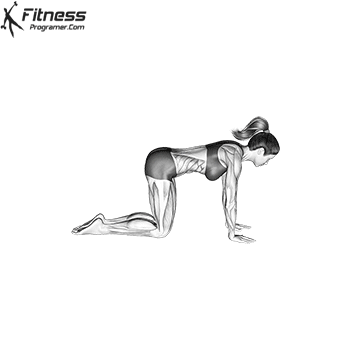
This exercise strengthens the spinal extensor muscles and deep spinal stabilizers, which support your spine, and builds strength and stability in your buttocks, lower back, and shoulders.
Combining an arm lift and a leg lift requires additional strength and stability because it increases rotational instability even more than removing the support of a leg.
Target Core Muscles:
- Transverse abdominis
- Pelvic floor ▪ Multifidus
- Quadratus lumborum
- Gluteus medius
- Gluteus maximus
How to do:
- Get down on your hands and knees, forming a tabletop position.
- Imagine drawing your navel towards your spine for optimal core activation.
- While keeping your abdominals tight, raise your right arm straight forward and extend your left leg straight back.
- Hold this position for a challenging 5 seconds, focusing on maintaining a straight line from your fingertips to your toes.
- Lower your right arm and left leg slowly back to the starting position.
- Ensure a controlled descent, emphasizing muscle engagement throughout the movement.
- Repeat the sequence on the opposite side, raising your left arm and right leg.
- Hold the position for 5 seconds, maintaining stability and control.
By incorporating this exercise into your routine regularly, you’ll not only strengthen your abdominal muscles but also enhance overall body coordination.
Conclusion:
By engaging and strengthening the core muscles, you enhance posture, stability, and balance, reducing the risk of injuries and promoting a more robust body.
Beyond the physical benefits, core activation exercises are a cornerstone for holistic health. They support improved digestion, alleviate lower back pain, and enhance your ability to carry out daily activities with ease. As you consistently integrate these exercises into your routine, you’ll discover the transformative power of a strong and activated core, influencing not only your fitness journey but your overall quality of life.

